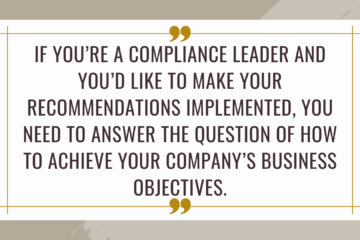How to Succeed in Due Diligence? (Part 1 – Behavioral Approach)

Photo by Glenn Carstens-Peters on Unsplash
Let's face it, due diligence processes are overwhelming: They never end, you feel like you are going over the same items for a thousand times, nobody is listening to what you say and if they do, they find obscure ways to turn it against you and make you look like you are unprepared.
However, if you want to attract investors or conclude partnerships (ideally - both!), they are an inevitable and necessary evil. In this two-post series I will try to answer some of the frequent challenges that I have encountered in Fintech startups undergoing due diligence reviews - and share some tips on how to streamline this process and save you a few gray hairs and a lot of hours.
Part 1 - BEHAVIORAL APPROACH
As is widely known in the world of digital marketing - "content is king". But anybody who has ever tried to optimize facebook ads will also tell you that targeting is extremely important - and to do it properly, you need to have a good idea who your audience is.
In a due diligence process you are, essentially, selling your business to a very particular set of stakeholders - due diligence officers, compliance analysts or business analysts. The difference is that they will be looking at your business through a prism of "how risky is it?", "will you get into trouble?", "will I get into trouble?", rather than looking at how sexy your venture is or how fast it is growing.
First - the decision maker is a compliance person, so here are the implications:
- They don't understand your business fully (and that's not their job);
- They don't care about your growth or business opportunities (and they may even see them as sources of risk);
- They DO look for certitude that you will not get into trouble or become a headache for them (essentially, evidence of good governance, policies and low-risk profile);
- They also like independent or third-party appraisals of your business - mostly because it is time saving for them (audit reports, BoD reviews, risk assessments, other existing partnerships).
Do you have to impress them? Yes. But you must do so in a way that addresses their specific professional concerns. They are not fundamentally evil, they're just doing their jobs. Usually.
Second - behave normally and transparently, display your risks:
This may sound a little counter-intuitive, but I've seen this work like magic. Think of it from this perspective - if you seem squeaky clean on first glance, but the compliance person is diligent (and doesn't believe appearances) - they will start digging into your numbers, policies and reports and every issue they find (and they will!) will seem bigger than it should.
By contrats, if you say it upfront: "Our riskiest customer segment are new merchants with no pre-existing track record and have high dispute rates. They represent 3% of our total transaction volume." This sends out 3 powerful messages to your due diligence officer:
- You are in charge: You know what is happening in your company and why. - good!
- You can quantify the problem and demonstrate how you manage it. - better!
- You are not afraid of your risks, because you are a professional, and risks cannot be avoided - but they can be managed.
Like this, the officer reviewing your case may not even need to look any further.
Typical Fintech risks are:
- Legal entities as customers (especially those with complicated beneficial ownership structures);
- Customers from mid- to high-risk geographies;
- Sources of funds (for example foundations, charities, or certain professional activities)
Now you know how to approach a due diligence review. In the next part we will talk about how you can bring it home with amazing form and killer-content.



[…] the first part of this two-post series we have seen how important it is to understand the perspective of a […]